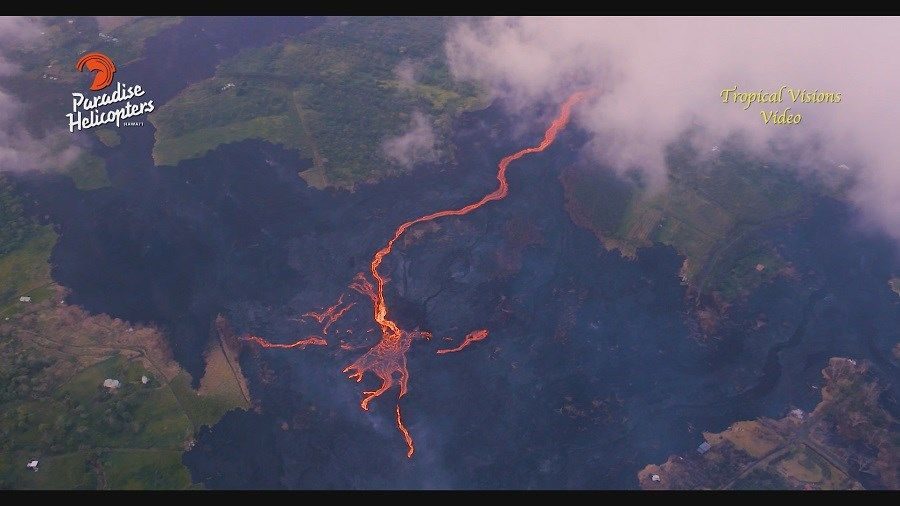
© Mick Kalber
Since lava broke to the surface, it has overrun 5,914 acres of land, or roughly nine and a quarter square miles.
The total number of homes destroyed stands at 467.
Seismic activity is on an almost predictable cycle after another strong earthquake Saturday morning.
A large explosion happened just after 10:20 a.m. at the summit of Kilauea. Officials say it had the energy of a 5.3 magnitude earthquake.
No tsunami was generated.
Air quality remains an issue as gasses and ash clog the air. USGS reports that the eruption from the lower East Rift Zone remains steady in Leilani Estates with few changes taking place over the past few days.
On Saturday, lava fountains from fissure no. 8 reached heights of about 170 feet into the air.
With the fast-moving flow, it was a similar scene all week.
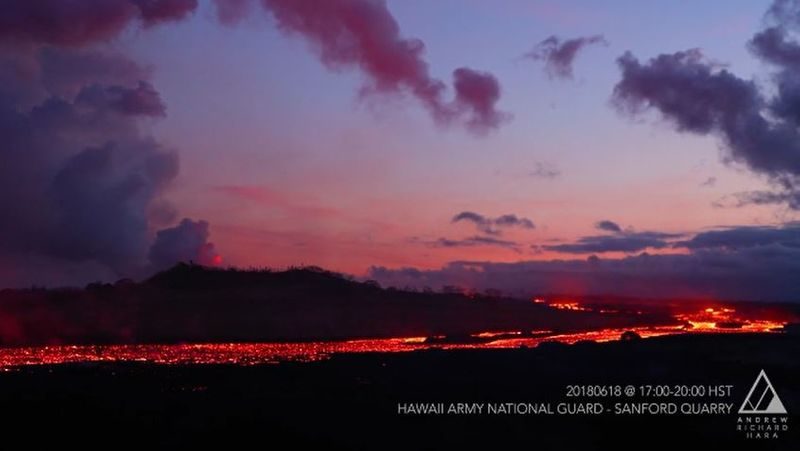
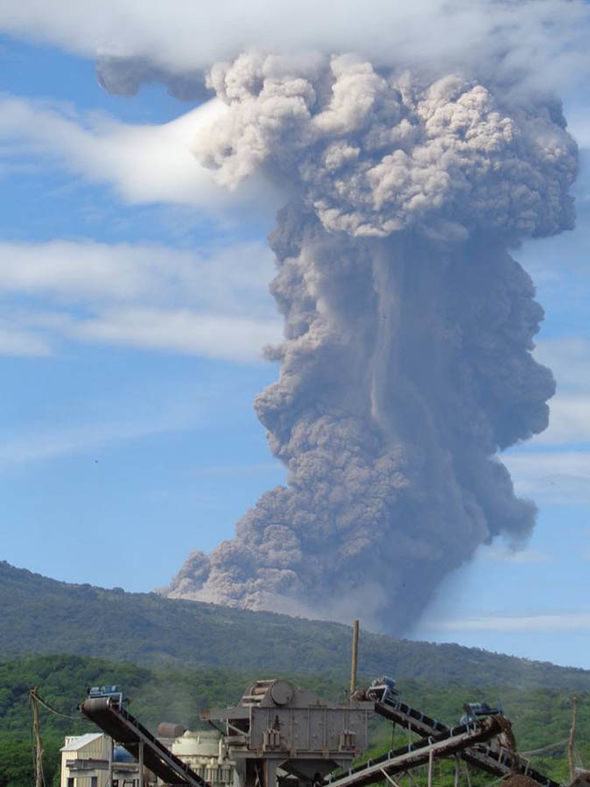
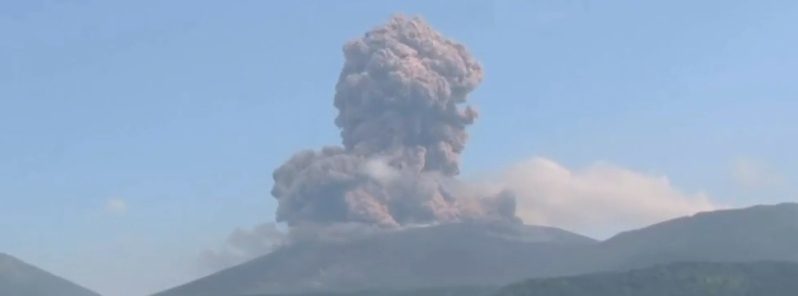
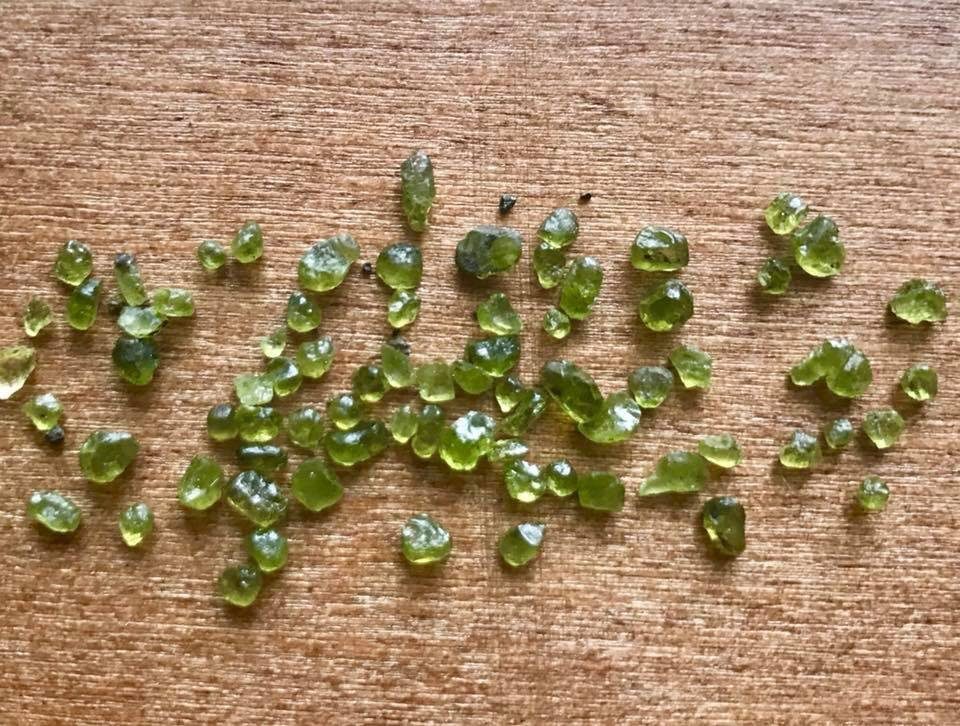

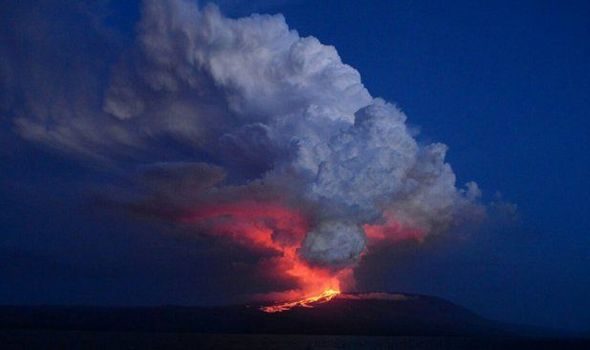
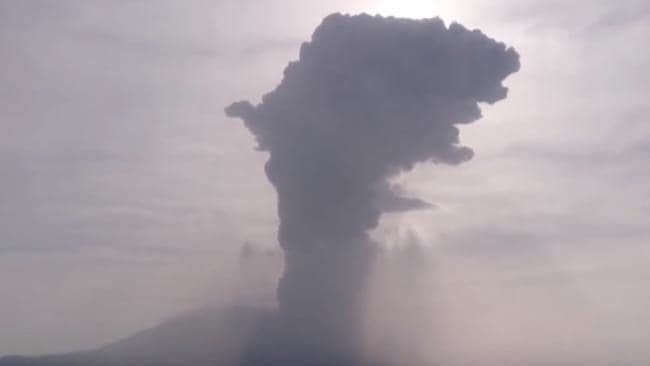
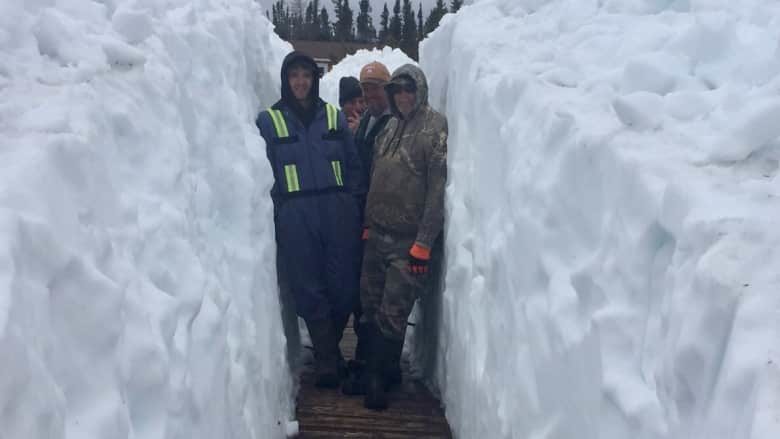
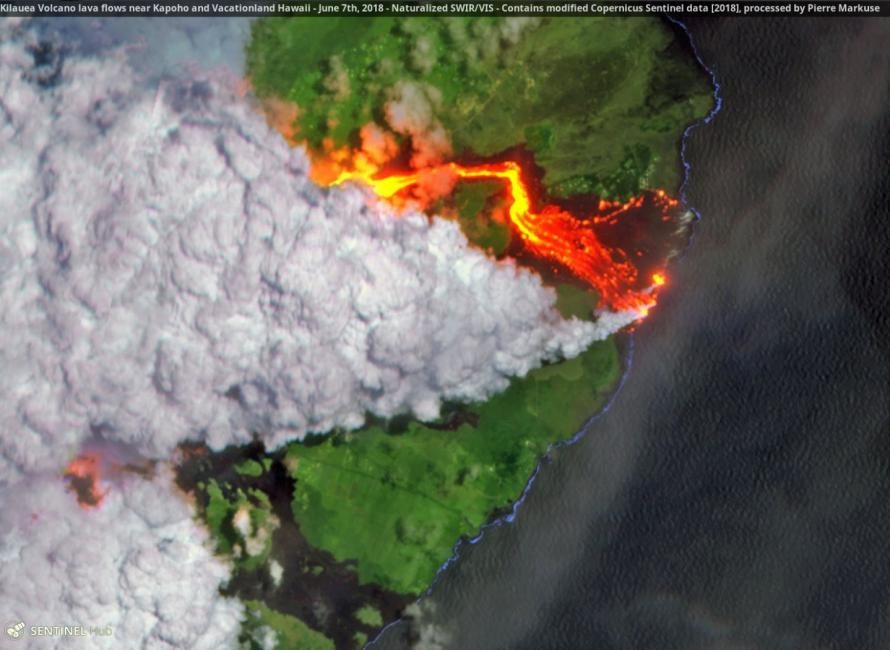
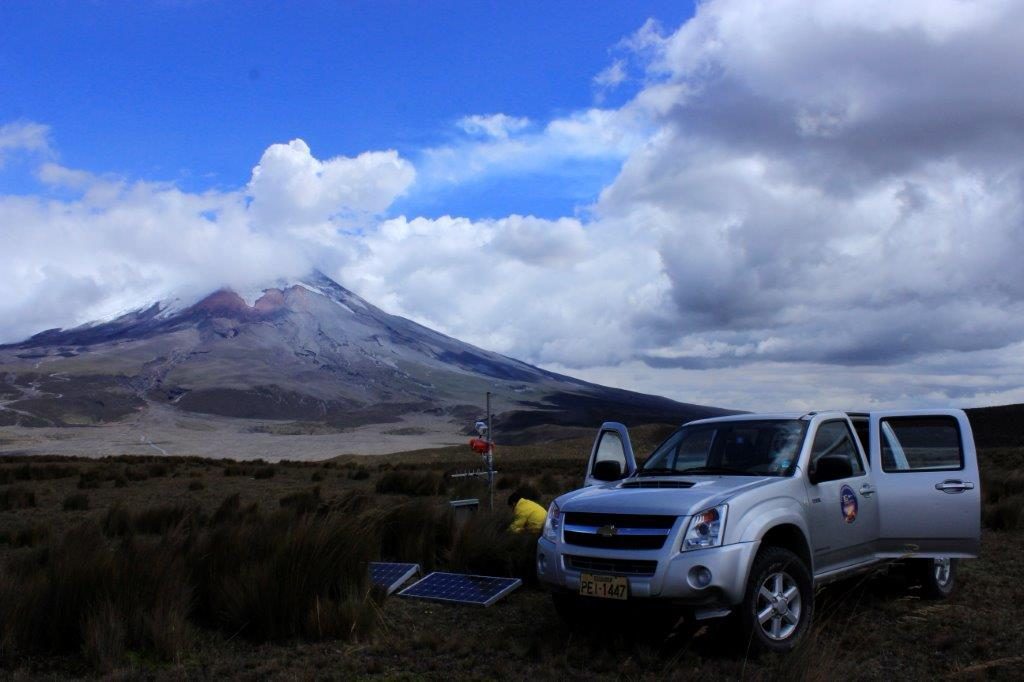



Comment: The relentless activity seen at Kilauea since it began erupting in May is reflected in the overall increase in seismic and volcanic activity all around the world:
- Telica volcano in Nicaragua spews huge ash cloud and rocks
- New explosive eruption at Shinmoedake volcano, Japan
- Powerful M6.1 quake strikes Port Villa, Vanuatu - Location considered "unusual"
- Vancouver Island hit with over 150 tremors in 24 hour
- M4.4 earthquake shakes part of northern Oklahoma
- Kilaeua: Lava covers more than 9 miles of island, M5.4 quake reported
- Series of stronger eruptions at Stromboli volcano in Italy
- Volcano in the Galapagos Islands erupts after series of 9 earthquakes
- Powerful earthquake in Bárðarðarbunga, Iceland, one of Vatnajökull's monster volcanoes
- Sakurajima volcano erupts again in southwestern Japan
- Another major eruption at Mount Sinabung, Indonesia
- Yellowstone's Steamboat Geyser has now erupted eight times in less than three months intriguing scientists
For more on the changes occurring on our planet, check out SOTTs' monthly documentary: SOTT Earth Changes Summary - May 2018: Extreme Weather, Planetary Upheaval, Meteor FireballsAs well as SOTT radio's: Behind the Headlines: Earth changes in an electric universe: Is climate change really man-made?